Over 100 Military Personnel Arrested During Iran Protests
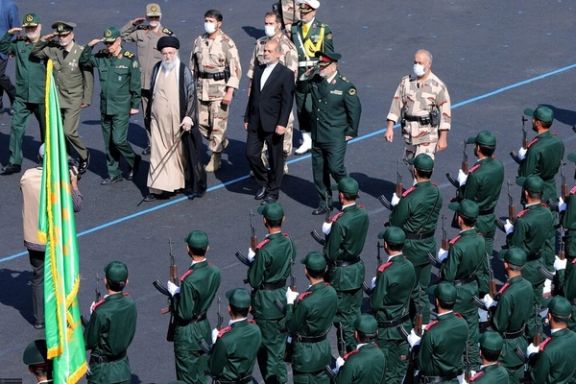
Leaked documents from Iran’s Fars news agency say the at least 115 military personnel have been arrested on charges of participating in the ongoing protest movement.

Leaked documents from Iran’s Fars news agency say the at least 115 military personnel have been arrested on charges of participating in the ongoing protest movement.
The files hacked by the Black Reward group reveal that as many as one percent of all those arrested during the protests after the death of Mahsa Amini were military personnel.
Earlier, Parliament Speaker Mohammad Bagher Ghalibaf, President Ebrahim Raisi and Judiciary Chief Gholamhossein Mohseni Ejei had announced at a joint meeting that such “baseless” reports are not “valid”.
However, as reports of the defections among armed forces continued, Hossein Rahimi, the police chief of Tehran, called for more financial support for security agents.
Reports say the regime forces have also arrested a former IRGC commander in an attack on his home, confiscating his personal belongings.
General Mohammad Bagher Bakhtiar had earlier published an audio file, accusing the Islamic Republic of hiding the reason behind Mahsa Amini’s death, who was killed in police custody in mid-September, stating that reliable sources have found out Mahsa Amini succumbed to the “injuries to her skull.”
The government never took responsibility for her death, claiming that she passed away due to a pre-existing illness.
He also stated the authorities of the Islamic Republic are “ambitious” saying if “common sense” had been exercised by accepting responsibility and apologizing for the incident, perhaps there would have been "fewer consequences.
Regarding the slogans by protesters against Supreme Leader Ali Khamenei, Bakhtiar emphasized that “the people are chanting slogans directly against the Leader. People do not want you. Understand this!”
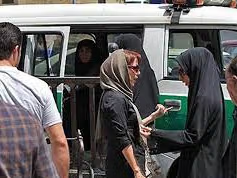
Iran’s Attorney General says the Islamic Republic has disbanded the “morality police” adding that it had nothing to do with the judiciary since its creation.
Mohammad Jafar Montazeri made the comments in a meeting Saturday, stressing however, that the judiciary continues to monitor behavioral conduct among the people, a hint that hijab rules are not scrapped and only special patrols in streets are disbanded.
It is not clear if Montazeri's remark is an official decision endorsed by other top officials or a publicity stunt to show flexibility on the part of the authorities. So far, there is no word from law enforcement that controls the hijab police, or the presidential administration.
Earlier in the week Montazeri had mentioned that the Parliament and the Supreme Council of the Cultural Revolution would announce their opinion on the issue of forced hijab within two weeks, signaling that the mandatory hijab rule might be modified or revoked.
The recent protest movement in Iran was triggered by the death of Mahsa Amini, a 22-year-old woman, when she was arrested by the ‘morality police’ for ‘improper attire.’ During the nationwide protests, women removed the mandatory hijab and set their headscarves on fire in the streets as a sign of protest.
Western governments, including the United Kingdom, the United States, and Canada, added the hijab law enforcement unit to their list of sanctioned entities.
Many women in Iran are now appearing in public without the mandatory veil and regular police is not interfering in a sign that authorities are either unwilling to risk further confrontation with the public or find it impossible to deal with so many women undermining the rule at the same time. Police forces have also become over-stretched during protests and many have resigned or have applied for early retirement.
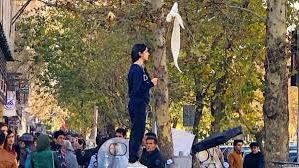
The ‘morality police’ was officially launched in the summer of 2006 during the presidency of then-president Mahmoud Ahmadinejad, a conservative. Ahmadreza Radan, the former police chief of Tehran during this time described the mission of ‘morality police’ as “fighting against improper hijab.”
The apparent end of the controversial and violent institution has been announced by a top Iranian judiciary official in a situation that people on social media say the decision would not persuade them to give up protests since they have fundamental demands, including an end to the Islamic Republic.
They say the mandatory hijab itself is an apartheid policy against women which is still in force. It also symbolizes broader demands for fundamental political and economic reforms like a free and independent judiciary, freedom of speech, free elections, etc.
The Islamic Republic is far from accepting such demands because that would mean its demise if officials became accountable through democratic institutions.
While people on social media generally call for the ouster of the regime, it seems the end of morality police is an insufficient concession to protesters.
Iranian women’s fight against state-imposed hijab started as early as in 1979 shortly after the Islamic Republic was established. Ayatollah Ruhollah Khomeini, the first leader of the clerical regime announced immediately announced that women would be allowed in their workplaces only if they observe compulsory hijab.
Soon after his comments, thousands of Iranian women poured into the streets to protest but they were brutally suppressed by pro-regime forces that would later form the Revolutionary Guard, Basij paramilitary and the ‘morality police.’
This led to years of socioeconomic marginalization of women who rejected the imposition of compulsory hijab and a host of other discriminatory statues and practices. Many well-educated Iranian women, including doctors, nurses, and teachers, lost their jobs and a large number emigrated.
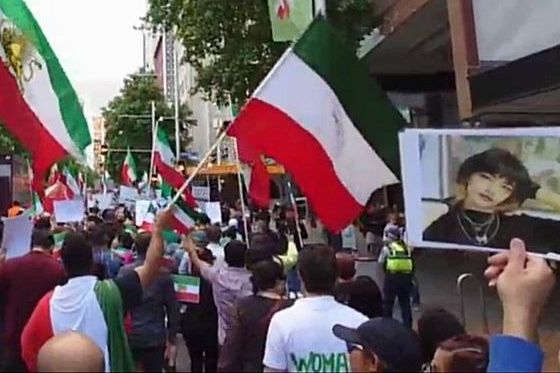
University students in Iran Saturday held demonstrations in many cities, as diaspora communities continued their weekend rallies in support of the protest movement.
Students at Tehran Azad University of Research and Sciences held a sit-in publicizing that they will hold protests on December 7 to mark the annual Student Day in Iran.
Students at Kharazmi University also protested widespread campus food poisonings, chanting “They poison students, and now justify it.”
Within the past ten days, hundreds of students at universities of Esfahan, Arak, Allameh, and Karaj Kharazmi were poisoned after eating dining in cafeterias. Student groups have issued announcements saying that the food poisoning was intentional by authorities to keep them away from protests.
In Tehran University, students at the Faculty of Social Sciences also held a sit-in to protest a recent security beef-up and the restrictions on students.
Many students at Kordistan University also staged a sit-in to protest the arrest of their professors, Behrouz Chamanara.
Meanwhile, Iranians abroad organized gatherings to declare their opposition to the Islamic Republic. In Frankfurt and Melbourne, the “Run for Freedom” program was held with athletes running long distances, and in Brussels artists reflected the voice of Iranian people with dance and music.
Iranians living in Sweden gathered in the city of Gothenburg like in previous weeks and chanted slogans against the Islamic Republic.
Similar demonstrations were held in the city of Auckland in New Zealand, Istanbul, Rome, and Vienna.
Meanwhile, Iranian human rights activist Nargess Mohammadi, who is imprisoned in Tehran’s infamous Evin Prison urged Javaid Rehman, the UN special rapporteur for human rights in Iran to probe into sexual assaults on female detainees.
In a statement published on her Instagram Saturday, she said “Assaulting women during incarceration and in custody centers is part of the regime’s suppression plan against female protesters and fighters.”
Mohammadi added that there had been “numerous and horrifying” reports of female prisoners being assaulted and raped in Evin and Zanjan prisons between 2010 and 2020.
The Iranian activist also went on to say that she was “assaulted and insulted by jail and security authorities in Evin Prison” in 2010. She filed a lawsuit, but instead of justice being served, she received a two-and-a-half-year prison sentence as well as 80 lashes.
In another part of her letter, she called on Rehman, “to investigate, hold accountable and condemn the government, to prevent the continuation of this inhumane method to suppress protesting women and to take serious and quick action in this regard.”
There have been widespread reports of rapes and other sexual abuse being committed on women detainees, which is seen as part of the brutal crackdown on women protesters demanding freedoms.
In November, a network of activists with a mandate to follow up on the condition of detained protesters in Iran reported dire human rights violations such as torture and sexual abuse.
The “Volunteer Committee to Follow-Up on the Situation of Detainees” reported torture, sexual harassment, threats of rape, not having access to medical services, and the detention of some inmates in secret locations.
The report said a female prisoner has been openly threatened with rape. The interrogators told her and other detainees “If you are raped here, you cannot protest! If you want to get naked, and you must pay for it!” The government and its agents accuse anti-hijab protesters of improper attire and nudity.

An Iranian state security body says over 200 people have lost their lives during the protests following the death of Mahsa Amini in mid-September.
In a statement on Saturday, the country’s Security Council said over two hundred people were killed during nationwide “riots”, a figure significantly lower than what human rights groups have released.
The judiciary's Mizan news agency quoted the interior ministry’s state security council as saying that security forces, people killed in terrorist acts, “rioters” and armed members of separatist groups have been among the dead.
However, the interior ministry has not acknowledged that regime forces have killed dozens of civilians using live rounds and direct fire.
The body has also warned the protesters that any illegal gathering would be dealt with decisively. This comes as according to the Oslo-based Iran Human Rights Organization at least 448 people including 60 children and 29 women have been killed by security forces in the ongoing nationwide protests.
The US-based Human Rights Activists News Agency (HRANA) announced in its latest report that at least 469 protestors have been killed, of which at least 64 were minors.
An Iranian Revolutionary Guard commander November 29 put the number of dead at three hundred in a contradiction with the numbers released by the interior ministry.
Iran blames “enemies” for the civil unrest, pointing at the United States, other Western powers, and Israel.

Top Iranian officials appear to perceive or pretend to perceive the ongoing protests in Iran as an outcome of what they call a "media war" against the regime.
From the start of popular protests in mid-September, Iran’s ruler Ali Khamenei and his top officials began blaming foreigners for the unrest, mostly ignoring the root causes of deeply felt public anger.
In one of the most recent comments in this regard, Iranian Army Commander General Abdolrahim Mousavi charged that "The enemies are waging a war on the Islamic Republic using audio, video and written words."He claimed that "the enemies are targeting the status of the Supreme Leader and the Islamic Republic's values."
Earlier, IRGC Commander Hossein Salami had also expressed his anger against the media coverage of the ongoing uprising and threatened foreign-based Persian broadcasters such as Iran International and BBC Persian. The satellite TV programs beamed by these independent media have become even more popular during the crisis for a public that is bombarded by one-sided government outlets.
The persistent accusations and threats against independent media reached a point that in early November London’s Metropolitan Police warned Iran International about serious terror threats against some of its journalists and positioned tight security around its headquarters.
Meanwhile, Iranian lawmaker Jalal Rashido Kochi told Didban Iran website on December 1, that "foreign-based media that operate against the Islamic Republic have become extremely powerful," however, he blamed state television, the Islamic Republic of Iran Broadcasting (IRIB)'s weakness for Iranian's trust in foreign-based media. He said Iranians should not trust the videos they watch on foreign-based televisions.
"Foreign-based media are aware that Iranians are not happy about their financial situation and the country's economic crisis, and they use this situation to fan opposition to the Iranian government," Kochi argued and added that the media scene has changed in recent years, and we can no longer convince the audiences to use an exclusive government-owned news source." Kochi was referring implicitly to the state TV's exclusive right to broadcast in Iran.
Following a decade of extreme censorship and sheer propaganda after the 1979 revolution, Iran allowed minimal openness on the state radio and TV in the early 1990s and dozens of reformist newspapers brought a breeze of media freedom in the late 1990s, but hardliners around Khamenei shut down all reformist papers, jailed proreform journalist and returned hardline fundamentalism to radio and television. In recent years, following the emergence and popularity of social media the government exerted pressures to ban nearly all social media platforms in Iran.
In an interview on Etemad Online, Hossein Nourani Nejad, the spokesman for the reformist party, said this week that "There is no hope in reforming the state television and media outlets aligned with military and security institutions." He was referring to publications such as the IRGC mouthpiece Javan, and other dailies such as Kayhan, Vatan Emrooz, Hamshahri, Fahikhtegan, Jam-e Jam, Hemayat and so on as well as IRGC-affiliated news agencies Fars and Tasnim and two dozen news websites linked to security organizations.
Nourani Nejad added that these media outlets basically produce news and current affairs stories to cater to the taste of a minority, presumably meaning the regime loyalists.
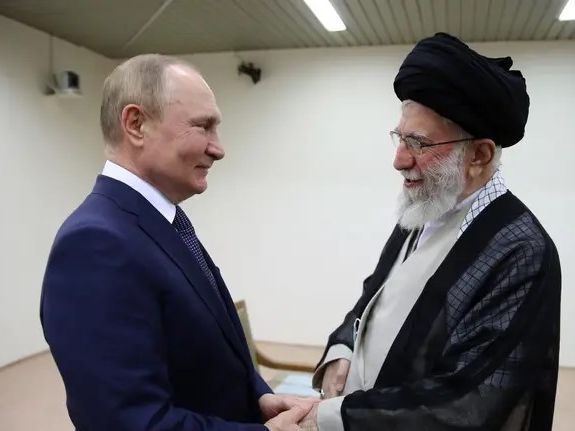
The Islamic Republic has asked Russia for help to quell the popular uprising by supplying anti-riot equipment and training, Iran International has learned.
The Iranian regime has asked Moscow to dispatch advisors as it is preparing for a long-term confrontation with protesters and concerned about its limited resources both in manpower and equipment.
Secret files recently obtained by hackers and shared with Iran International also shows that Tehran is relying on information from Moscow to assess its own internal situation. There are references in the documents that Russia is eavesdropping on Western communications to give Tehran assessments about the nature and strength of the protest movement.
The new information about Tehran asking Moscow’s help confirmed remarks late in October by the White House that Russia may be advising Tehran on optimal methods to suppress the ongoing protests.
White House press secretary Karine Jean-Pierre said during a joint press briefing with Coordinator for Strategic Communications at the National Security Council in the White House John Kirby that Moscow may be helping the Islamic Republic, drawing on its own experience in suppressing demonstrations.
"The evidence that Iran is helping Russia rage its war against Ukraine is clear and it is public. Iran and Russia are growing closer the more isolated they become," Jean-Pierre said. "Our message to Iran is very, very clear: Stop killing your people and stop sending weapons to Russia to kill Ukrainians."

Kirby said that the White House is certain about Russia’s help in the crackdown on protesters, adding that it is not an allegation but a fact. “We know they may be considering some sort of support to Iran’s ability to crack down on protesters. And sadly, Russia has experience at doing that,” he said.
Kirby called it “just yet another example of Russia and Iran now working together to violate the — not only the human rights and civil rights of people in Iran but, of course, put in further danger the lives of Ukrainians.”
The growing outcry against Iran’s brutal crackdown on anti-government protests ignited by the beating to death of Mahsa Amini that has led to about 470 other killings has now been magnified by the Islamic Republic’s tilt toward Russia and arms support for its invasion of Ukraine.
It has already caused a policy shift in Washington as the Biden administration has said that the revival of the 2015 Joint Comprehensive Plan of Action (JCPOA) is not a priority at present and that the US focus is on the protests in Iran. US Special Envoy for Iran Robert Malley said earlier in the week that President Joe Biden is prepared for a military option to prevent Iran from acquiring a nuclear weapon in case sanctions and diplomacy fail.
A senior Revolutionary Guard commander Saturday told Iran International that the IRGC's chief commanders have called up 1,000 retired members to help quell the popular uprising as they don't have enough forces, but only 300 accepted to return to service and crack down on protests.
Earlier in the week, an audio file obtained by the hacktivist group, Black Reward, revealed concerns among Iranian officials about their worn-out security forces, media failures and labor strikes.
Black Reward found access to Fars News Agency’s data servers in recent days providing Iran International with an audio tape of a meeting between a Revolutionary Guard general and a group of media managers or representatives from outfits affiliated with the IRGC.
About 18,000 people have been arrested since the beginning of the protests, and some death sentences have already been issued for the protesters, though none have been carried out. According to Norway-based HRANA on December 2, 469 protestors and 61 members of the security forces have been killed in protests since September 17.